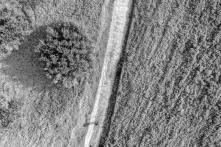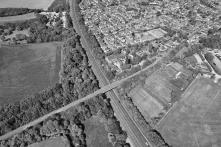Urban–rural divide
Decoding a multilevel gap
The over-concentration of population, power, resources and opportunities in large cities is a characteristic feature of Greece, which creates a clear and multilevel gap between urban and rural areas. The prolonged economic crisis and the demographic problem have put the sustainability and long-term prospects of the Greek countryside at risk. With this special dossier, the Heinrich Böll Foundation is launching a public debate on this overlooked issue, addressing it in all its complexity and presenting not only the problems but also best practices that can serve as an example for Greek cities and regions.

Video
As part of our conference ‘Rethink! Ideas Forum — A green compass for Greece: society, economy, ecology’, the thematic session entitled ‘Dealing with the urban–rural divide’ raised a new issue in the public debate: the (very often) chaotic differences between Greek cities and the countryside. Watch the video!

Rethink! Ideas Forum #3 Dealing with the urban-rural divide - Heinrich Boell Foundation - Office Thessaloniki
 Watch on YouTube
Watch on YouTube
Speakers: Byron Kotzamanis, Demographer & Professor of Demography at the Department of Planning and Regional Development, University of Thessaly; Sevdalina Nenkova, Director of Directorate ‘Education and Social services’, Municipality of Gabrovo (Bulgaria); Alexandros Pazaitis, Researcher, Tallinn University of Technology & member of P2P Lab; Carolina Perpiñá Castillo, Territorial and Geospatial Analyst, Joint Research Centre (European Commission).
Byron Kotzamanis clarifies that the two extremes of the gap are not the cities and the villages in general, but rather the two major urban centres of Greece (Athens and Thessaloniki), on the one hand, and the rest of the country, on the other. As he points out, 50% of the population in Greece lives on just 3% of the country’s surface! He stresses that the Greek rural areas have no vital forces but an increasingly ageing population instead, and says he is pessimistic about the chances of reversing this phenomenon. For her part, Carolina Perpiñá Castillo introduces official EU data on the rural–urban divide, which has been approached from many different angles. Important indicators, she explains, are demographic shifts, the distance of the inhabitants from health and education services, and access to broadband internet. With regard to most of these indicators, Greece is unfortunately below the European average. Concerning the transferring of good practices from an institutional level, Sevdalina Nenkova speaks about various projects and achievements of the municipality of Gabrovo, Bulgaria, thanks to which this city of about 60,000 inhabitants was awarded (in 2021) the prestigious EU Green Leaf Award. Another good practice, but from a different domain, is shared by Alexandros Pazaitis, who is part of a team that applies open technologies (patent-less free software, knowledge sharing, etc.) to manufacture agricultural tools in a laboratory in the Tzoumerka mountains, tailored to the specific needs of the region.
Articles

Survey

Notes from the field
A first attempt to map possible ways of bridging the gap between rural and urban areas were two short research trips we made in Rapsani, Larissa, and in the wider area of Ioannina. The choice of these areas was based on the alternative perspectives that are developing around community and technology, and the prospects they could open up in terms of development potential. The material gathered during these trips will hopefully contribute to a broader dialogue about the rural areas of Greece.




